Common Name(s): Basswood, lime, linden, American basswood
Scientific Name: Tilia americana
Distribution: Eastern North America
Tree Size: 65-120 ft (20-37 m) tall,
3-4 ft (1-1.2 m) trunk diameter
Average Dried Weight: 26.0 lbs/ft3 (415 kg/m3)
Specific Gravity (Basic, 12% MC): 0.32, 0.42
Janka Hardness: 410 lbf (1,820 N)
Modulus of Rupture: 8,700 lbf/in2 (60 MPa)
Elastic Modulus: 1,460,000 lbf/in2 (10.07 GPa)
Crushing Strength: 4,730 lbf/in2 (32.6 MPa)
Shrinkage: Radial: 6.6%, Tangential: 9.3%,
Volumetric: 15.8%, T/R Ratio: 1.4
Color/Appearance: Pale white to light brown color, with sapwood and heartwood sections not clearly defined. Growth rings tend to be subtle, and color is mostly uniform throughout the face grain of the wood. Knots and other defects are uncommon.
Grain/Texture: Grain is straight, with a fine, even texture and moderate natural luster.
Rot Resistance: Basswood is rated as non-durable in regard to heartwood decay.
Workability: Easy to work, being very soft and light. Perhaps one of the most suitable wood species for hand carving. Basswood also glues and finishes well, but has poor steam bending and nail holding characteristics.
Odor: No characteristic odor.
Allergies/Toxicity: Besides the standard health risks associated with any type of wood dust, no further health reactions have been associated with basswood. See the articles Wood Allergies and Toxicity and Wood Dust Safety for more information.
Pricing/Availability: Widely available as lumber or carving blanks. Prices are in the lower range for a domestic hardwood, though larger carving blocks can be more expensive.
Sustainability: This wood species is not listed in the CITES Appendices, and is reported by the IUCN as being a species of least concern.
Common Uses: Carvings, lumber, musical instruments (electric guitar bodies), veneer, plywood, and wood pulp/fiber products.
Comments: Species in the Tilia genus are usually referred to as either lime or linden in Europe, while in North America the trees are most commonly called basswood.
Basswood is an ideal wood for many woodcarvers. Its soft, fine, even texture make it easy to work with, while its pale, inconspicuous color doesn’t detract from the carved patterns of the finished product (which also makes it easier to paint and color).
Though basswood has high initial shrinkage, the wood is stable in service after it has been dried. And though the wood is both lightweight and soft, it has an outstanding MOE-to-weight ratio. However, its MOR is on par with its low weight; simply put, when put under stress, the wood will remain stiff, but will still break (rupture) at a relatively average weight.
Images: Drag the slider up/down to toggle between raw and finished wood.
Identification: See the article on Hardwood Anatomy for definitions of endgrain features.
Porosity: diffuse porous
Arrangement: predominantly in radial multiples or clusters of two to four pores
Vessels: medium, very numerous
Parenchyma: diffuse-in-aggregates, banded (marginal)
Rays: narrow to medium width; normal spacing; noded
Lookalikes/Substitutes: Basswood can sometimes be confused with a number of lightweight diffuse porous hardwoods such as yellow poplar (Liriodendron tulipifera), magnolia (Magnolia spp.), willow (Salix spp.), and aspen/cottonwood (Populus spp.). Looking at the ray widths (and checking to see if the rays are noded as they cross growth ring boundaries) can help separate Tilia from Salix and Populus species, which tend to have smaller, less distinct and non-noded rays. However, if the wood sample in question is sapwood and lacks a colored heartwood area, it can be difficult to distinguish it from Magnolia species, as well as Liriodendron tulipifera, both of which usually require microscopic examination to tell apart.
Notes: None.
Related Content:

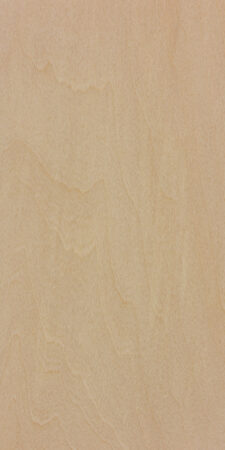
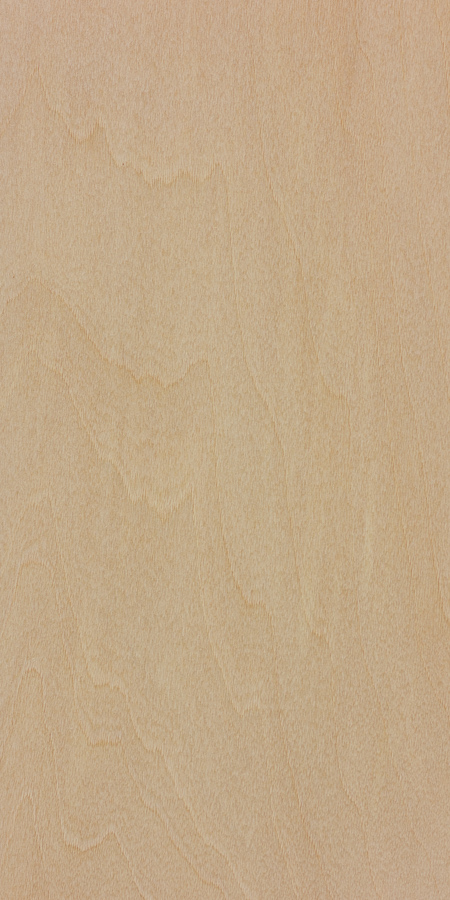
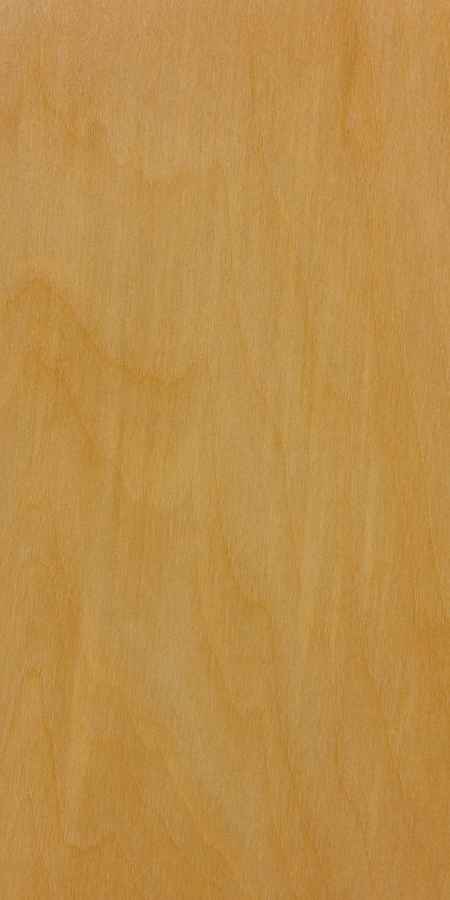
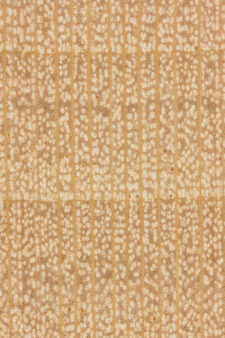

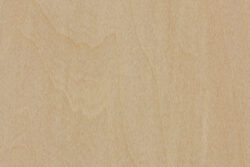
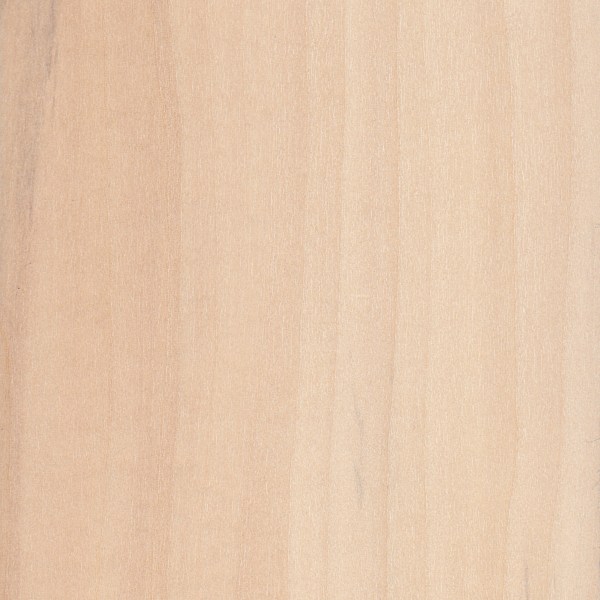
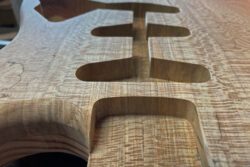
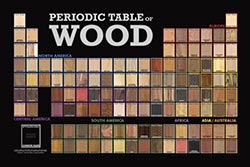


I’m thinking of using basswood to trim out windows and do some accents in my home. Is there a reason I shouldn’t use basswood? Light, easy to work, takes a finish nicely, easy and cheap in my area. My main two concerns would be durability and whether the finish will fade with excessive sun exposure (maybe not a large concern as it should fade evenly when inside the window opening).
Basswood is used for many hobbies. Airplane and Model Railroading come to mind right off. It is very easy to work. Carves and cuts easily. Light weight as well. Many of the model kits use basswood exclusively. I’ve used it to create lumber in 2X4, 2X6 and larger for my model railroad buildings. Takes either paint or stain easily. Clues such as ‘Canopy Glue’ work well for this purpose. So do a number of the Elmars Wood glues. Highly recommend it for model building.
Wondering if basswood was commonly used in horse buggy bodies?
Hoping for some advice from luthiers who have used basswood for electric guitars, especially any problems you have encountered. Does it hold fasteners securely? Should I saturate the surface with a hardening resin? Top it with a layer of harder wood? I just glued up a basswood body blank for a Mini-T style electric guitar. It is my first experience with this wood. My blank seems soft, even for basswood. It is only 24lb/cu ft. The light weight is great, since this will be a child’s guitar, but it needs to be strong and stable. I bought a 12 foot… Read more »
Replying to my own post after building a couple of basswood guitars. The wood machines well with minimal tear-out, but produces powdery dust that floats everywhere. Dust collection is essential. I ran thin superglue into all screw holes prior to final hardware installation, which should harden the threads and allow future work on the instruments without the screws stripping. Acrylic and urethane finishes seem to wick into the surface and toughen it some, but it will still ding easily. The light weight makes all this worthwhile. It is being used on premium guitars by Music Man and Ibanez among others,… Read more »
Basswood is an excellent but idiosyncratic tone wood. It has a very distinctive ‘roar’. Fender has been using it for decades on its Squire line of budget guitars.
If anyone wonders about finishes, mineral oil and fine grain abrasive paper seems to get a finish just as smooth as hardened resin in my limited experience,
(I wet the abrasive with oil by holding it to the mouth of the bottle,then turning it upside down for a spilt second.)
Hope its usefull to someone.
I’m going to try the mineral oil technique for once….thanks!
Hello,
Is there a good alternative that is similar to basswood? I am looking for a wood with similar properties that I can get in my area (Alberta, Canada): straight grained, easily worked, hardwood, etc. I can’t seem to find basswood locally.
Thanks!
Maples are said to be a good alternative to basswood.
Balsam poplar grows abundantly in your area.
western hemlock
Basswood is often sold as Linden. Ask for Tilia americana. It is native and hardy down to Zone 2.
Jelutong is very similar to Basswood, but I’m not sure if it’s available in your area. You could definitely order it, however. I had never heard of Jelutong until I started following a famous wood carver. From his comments, I think he uses it on 99.9% of his work ? I’m in the US, and I would have to order it. Fortunately, just today I was looking at a local online sales site and found Basswood for US $.80/bf… so I plan to stock up on it within the next few days ?
In Canada we call it linden, because we like to pretend we are European. There should be plenty of people with linden trees on their property in alberta.
Can anyone tell me if basswood changes colour over time? E.g. if made into a high quality ply, will it darken and yellow? Thank you!
I’m wondering this as well, since I want to use it for pyrography. Do I need to varnish it so that over time my artwork doesn’t darken in the sun?
I have been doing pyrography on thirty year old basswood and yes it is darker.
I am building an electric guitar. The body is solid basswood. Can anyone advise me on the process of sanding/staining/finishing this type of wood? I’ve been Googling for days and haven’t found much on how to finish this wood. Some say use a grain filler, while some say don’t, etc. Any help would be appreciated.
Maybe I’m missing something, but I can’t imagine ever needing to use a grain filler for basswood as its pore are pretty small to begin with. When it comes to staining and finishing just about anything for the first time, an indispensable rule of thumb is test on scrap pieces first. Surely you’ll have some extra pieces of basswood lying around. With so much time invested in making the guitar, I’d be best to use the scraps and make sure everything turns out the way you’d like first.
Basswood is a tight gain wood and requires no grain filler.
Input from a few people that I know that have basswood electric guitars, they get dinged/dents easily compared to the other common woods for electric guitar bodies like maple, mahogany or walnut. Finish may be a contributing factor if it is very light or lacking it altogether as far as durability against dings but some may not like a heavy lacquered finish either(resonance debate). It’s getting more and more common in DIY kits or for that matter, cheaper guitars. I guess basswood is cheap but is it crap for guitars? The person that is budget conscious or unknowing of musical… Read more »
I thought it was cheap. Joe Satriani, Steve Vai and Guthrie Govan would argue it’s the very best tone wood. They’ll say things like it has a bigger sonic footprint. The best sounding Les Pauls I’ve made for myself are basswood. I’m making more. I even have some curly basswood for the tops. Its much cheaper and more sustainable than Honduran Mahogany which is the most sought after tone wood. I have both types of Les Pauls. Basswood is better. IMHO It hurts me to say it.
I use it for building jewellery boxes for chip carving. I use a spray shellac and the sand with very fine sandpaper. I do this 3 or 4 times. You end up with a silky hard surface!
Never knew what basswood was and was curious to find out as some guitars seem to be made of it. Reading this I can see why, it has a lot of the right properties.
……most northern European towns that have an Allee, mostly planted with Linden Trees,and often ended up being called “Linden Allee”, most handsome straight trunks and a well balanced round crown that turns into a beautiful yellow ball in autumn. We, as children grumbled a bit because we had to sweep up the jolly leafs and they went straight into the cement compost pit at the rear of the garden.Hardy trees that frame very many streets and needless to say, great for climbing. If room permitted, they were also a favourite for rear gardens, planted in a U shape and facing… Read more »
American basswood is a wilder looking cousin. The leaves are very large and the trees grow to a greater diameter. We have introduced Lindens but Basswood trees look natural as opposed to cultivated.
I know the maple, cherry and walnut are preferred species for cutting boards. Any opinion on using basswood for cutting boards?
Basswood is one of the softest woods around… Not saying you can’t, just recognize its limitations. Might work for something like a serving tray, but not the best for cutting boards where knives will be gnashing against it.
We like to use Purple Heart for accents on our cutting boards.
Does anyone know if Basswood grows in the Upstate of South Carolina? We live about 20 miles from the North Carolina border. I am starting wood carving and as a beginner I unfortunately go through a lot of wood. The wood it self is not to expensive, but the shipping is what makes getting a large quantity very hard. Thanks for any help or ideas.
Teresa
Generally, basswood grown in the Carolinas is not the quality for carving as basswood from the Northern states, ie Wisconsin and Mn. Arrowhead Woodproducts, a Northern Mn company will be at the Charlotte Woodcarvers Show in February, 2021 with basswood for sale. Great prices – quality wood at the largest woodcarving show in the southeast.
Although basswood is also known as linden or lime in Europe, it is commonly planted in towns and cities throughout the US as an ornamental. You see Linden Boulevard or Linden Street, etc. all over the country, with basswood trees often lining the sidewalks. If you’re a woodcarver and have never used this wood, you’re in for a real treat. It’s like it was designed to be carved. Go to google images and look at the carvings of Grinling Gibbons.
American Basswood is not the same as the European Linden. Related but big visual difference. American Basswood is not cultivated looking but wild looking with larger diameter trunks and huge leaves. Woodpeckers frequently have many holes in them all over
I like Basswood for turning…inexpensive and easy to find. Turns easy but takes some effort to get a good sanded finish. This 4″ x 6″ Basswood box was made for a toy throw-top storage and display.
Question: does Basswood make good (or even CLOSE to good) Tomahawk/axe handles?
Hello, Roger.
Since it is a soft wood, it isn’t suitable for a “tool” handle.
Look for harder woods if you don’t want to replace those handles frequently.
Cheers!
Try to select other woods using the Janka Hardness scale as a reference.
Cheers!
Hickory, White Oak, rock maple and other HARDwoods are what you want for a handle. If you want something that looks really really nice (grain-wise) then you could try Myrtle or Bubinga. Bubinga is essentially African Rosewood, incredibly dense, very very hard and difficult to work. The wood itself is beautiful red-brown color, very pretty grain, as is myrtlewood.
Ima kid trying to research this and what eats basswood and what does it need to survive Please!
Is basswood 100% natural?
Of course it is. It grows commonly all over the Great Lakes region and well beyond.
Hi! I have no idea what species wood this is (see attachment photo)..I browed your data base but didn’t find anything that matched it (esp. the exterior / bark ).
Please let me know what you think!
Thanks,
Rudy
Looks like American beech. Some of the light colored leaves on the ground match. You may be able to find some of the old seed pods on the ground as well.
Hi!
I found some Basswood I had stashed in my closet in 2011. Yippee!
How does one re-hydrate wood?
Many thanks,
Mike
Wet it. Put it in a plastic Ziplock bag. Leave it for days or weeks, depending on size. If it’s too damp to carve, let it dry some.
Is basswood hard wood or soft
It’s considered a hardwood. Which is weird because it’s said to be very soft.
Hardwoods and softwoods don’t refer to the harness of the wood, but how they reproduce. Hardwoods are angiosperms which means that they have a seed with some kind of shell covering (hard). Softwoods are gymnosperms, which has soft seed (most often conifers). Some softwoods (like yellow pine) are quite hard, and some hardwoods (like balsa) are quite soft.
Similar to medium hardness pines.
Nice Book for Foresters and not only.